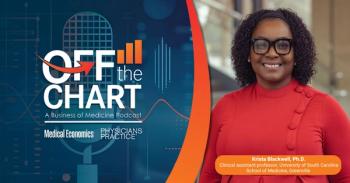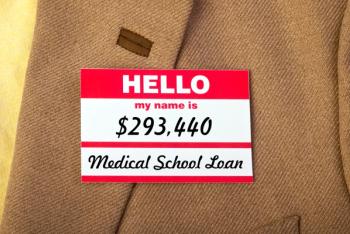
‘It's just very humbling’ — New AOA president discusses his background, vision for osteopathic physicians
Key Takeaways
- Robert G.G. Piccinini is the first psychiatrist to lead the AOA, highlighting the integration of mental health in osteopathic medicine.
- Piccinini's medical journey was inspired by a childhood experience and his ability to connect with patients, leading him to psychiatry.
Robert G.G. Piccinini, DO, D.FACN, was installed this summer to lead the American Osteopathic Association.
In July, Robert G.G. Piccinini, DO, D.FACN, became the first psychiatrist to be installed as president of the
Piccinini maintains a private practice in Michigan and serves as a clinical adjunct instructor at A.T. Still University Kirksville College of Osteopathic Medicine (ATSU-KCOM). He is a former chief of psychiatry at Henry Ford Macomb Hospital and has held faculty appointments at Michigan State University College of Osteopathic Medicine, said his official AOA biography.
In his
This transcript has been edited for length and clarity.
Medical Economics: What made you want to become a doctor, and what made you want to focus on psychiatry and patients’ mental health?
Robert G.G. Piccinini, DO, D.FACN: Well, two separate things. One, when I was really, really young — my parents used to like to tell me a story, and I had somewhat memories of this. When I was young, about 4 years old, my dad was hurt at our family cottage, and my mom and siblings were off somewhere, and I went and got the bandages and bandaged up his hand, and I said I was going to be his doctor. And so I kind of was universally focused on that throughout my life. A little bit of sidesteps, I went to military school at a young age, but never really lost the focus of medicine. And then, as I mentioned, I started off in internal medicine, but at the time, my mentors and my trainers noticed that I had an ability to really bring out people and have them tell their stories, and a way to make people feel at ease. So a few of them said to me, maybe this other specialty might serve you even better. I looked at it and everything clicked, and I jumped from internal medicine over to psychiatry, back when you could.
Medical Economics: You are the first psychiatrist to serve as president of AOA. What does that mean to you?
Robert G.G. Piccinini, DO, D.FACN: It's very humbling. It's very humbling. You know, our history of the osteopathic medicine is one that, just before our founder, A.T. Still, passed away in 1917, he had written a Christmas card to all his graduate students and current students. And just before he had passed away, the Still Hildreth Sanitorium in Macon, Missouri, had opened up, and in his last note, he had said that, because of that, the full aspect of osteopathic medicine had reached its culmination by entering into mental health. So that was 1917, and it's taken this long for a member of our specialty college to rise to this level. It's just very humbling.
Medical Economics: When you were researching how you wanted to continue your studies and pursue your education, were you familiar with the tenets of osteopathic medicine?
Robert G.G. Piccinini, DO, D.FACN: At first, you know, as a young boy and an adolescent, I just wanted to be a doctor, and then throughout time, I learned about osteopathic medicine, that it existed. And having had a family of immigrants, coming from a family of immigrants, it just seemed the tenets of health and wellness and whole-person care and the body's innate sense of healing itself, if structure and function are in line, really set home to what immigrants did all their lives. They figured out how to do things, and they figured maybe not the traditional or accepted ways. They kind of came at things in a different way that made sense, and the family approach of osteopathic medicine, the down-to-earth approach of osteopathic medicine, just really set home with me.
Newsletter
Stay informed and empowered with Medical Economics enewsletter, delivering expert insights, financial strategies, practice management tips and technology trends — tailored for today’s physicians.
















